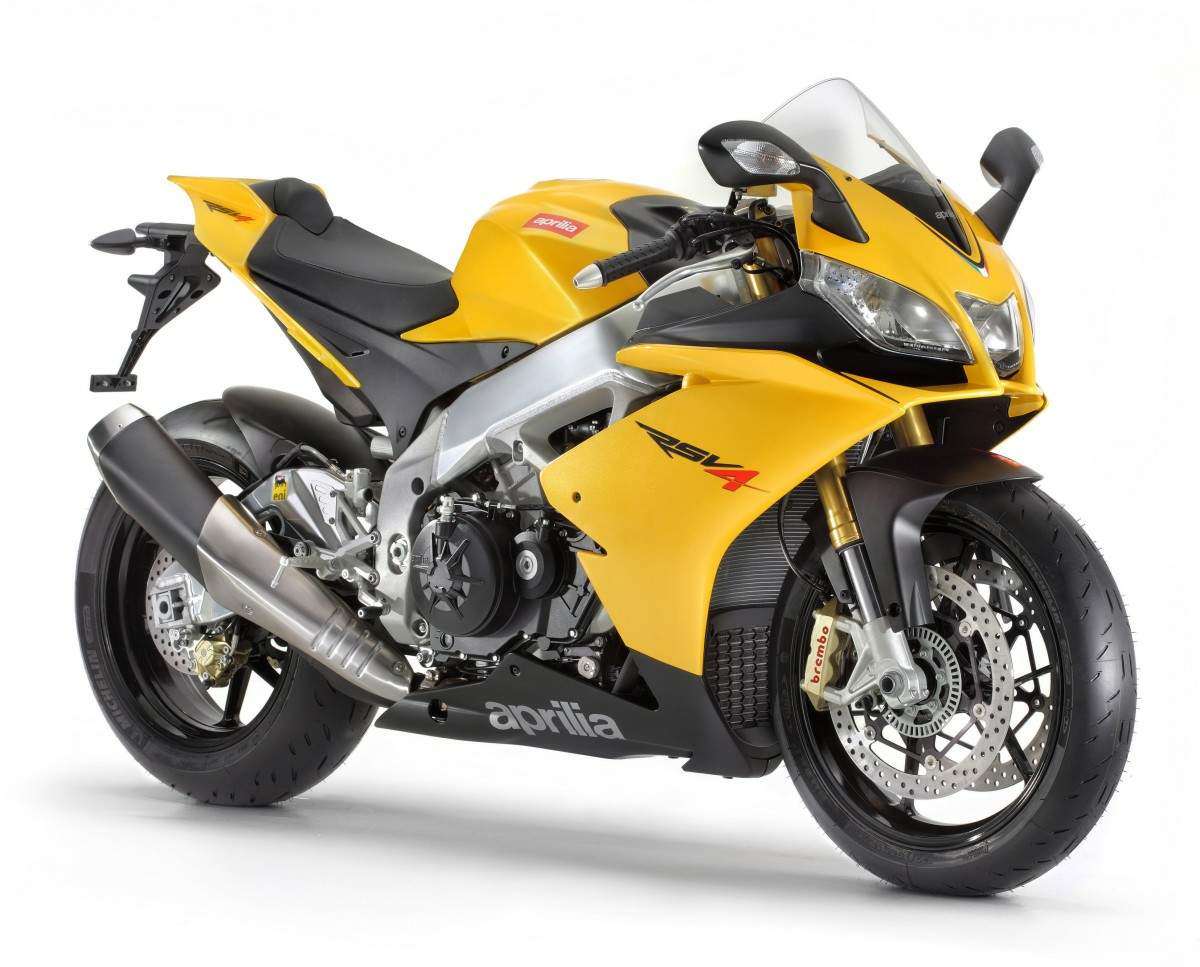
|
|
|
|
|
|
Classic Bikes
Custom Bikes
Individual
Racing Bikes AJP
AJS
Aprilia
Ariel
Avinton / Wakan
Bajaj
Benelli
Beta
Bimota
BMW
Brough Superior
BRP Cam-Am
BSA
Buell / EBR
Bultaco
Cagiva
Campagna
CCM
CF Moto
Combat Motors
Derbi
Deus
Ducati
Excelsior
GASGAS
Ghezzi Brian
Gilera
GIMA
Harley Davidson
Hero
Highland
Honda
Horex
Husaberg
Husqvarna
Hyosung
Indian
Jawa
Kawasaki
KTM
KYMCO
Laverda
Lazareth
Magni
Maico
Mash
Matchless
Mondial
Moto Guzzi
Moto Morini
MV Agusta
MZ / MuZ
NCR
Norton
NSU
Paton
Peugeot
Piaggio
Revival Cycles
Roland Sands
Royal Enfield
Sachs
Sherco
Sunbeam
Suzuki
SWM
SYM
Triumph
TVS
Ural
Velocette
Vespa
Victory
Vincent
VOR
Voxan
Vyrus
Walt Siegl
Walz
Wrenchmonkees
Wunderlich
XTR / Radical
Yamaha
Zero
Video
Technical
Complete Manufacturer List
|
Aprilia RSV 4 Factory APRC
The RSV4, currently one of the hottest, fastest superbikes on
the planet, gets new colours for 2012 as well as revised engine management and a
tweaked, optimised Aprilia Performance Ride Control (APRC) package with
eight-level traction control, launch control, quick shift system and wheelie
control.
FROM THE QUEEN OF SBK APRILIA DISTILS THE
PERFECT BIKE FOR THE TRACK DAYS ENTHUSIAST GENTLEMAN RIDER.
But the improvements to the Aprilia RSV4 APRC
do not stop with electronic management. The 65° V4 engine offers improved
lubrication and closer spaced gears for better acceleration. The new, lighter
exhaust features an advanced butterfly valve management system to suit the Ride
By Wire mapping for improved breathing and efficiency throughout the RPM range.
2012 Aprilia RSV4 Factory APRC Model
Highlights
AWC: stability at top acceleration
THE MOTORCYCLE
THE ENGINE
The innovative timing system (with the chain
camshaft driving only the intake camshaft, which in turn drives the exhaust
camshaft via a gear) has made extremely compact heads (just 250 mm at the rear
of the engine) especially in the area beneath the frame spars, which are thus
much narrower than would otherwise be possible.
CHASSIS
Suspension
Battle of the V4s: Honda VFR750R RC30 vs Aprilia RSV4 Factory APRCWhat can we say about the Honda RC30 that
hasn’t already been said before. Yes, we’re among the vast number of fans which
the 750cc V4-engined VFR750R still has more than two decades after it was
launched. A mere 3,000 units of this bike were produced between 1987-1990 and
even back then, it cost a massive US$15,000. The RC30’s claimed dry weight was
185 kilos and according to some magazine road tests of the era, the bike weighed
as much as 215kg with all fluids and a full tank of fuel. And by modern
standards, the 750cc V4’s power output was rather ordinary – 112bhp at
12,000rpm, which went up to a more respectable 133bhp with the HRC race kit that
was available from Honda.
Aprilia RSV4 vs Honda RC30 Aprilia RSV4 vs
Honda RC30 Aprilia RSV4 vs Honda RC30 Aprilia RSV4 vs Honda RC30 Aprilia RSV4 vs
Honda RC30 Aprilia RSV4 vs Honda RC30
Twenty years after the Honda
RC30 came out, Aprilia have picked up the V4 lineage with the
RSV4. Sure, it might well be that V4s are more complicated, but
they have their advantages – just look at MotoGP, where V4s have
been dominant for years. According to Aprilia, the RSV4 is 40%
narrower than a comparable inline-four, which makes for a
narrower, more aerodynamic silhouette that makes inline-fours
look bulky.
|
|
|
Any corrections or more information on these motorcycles will be kindly appreciated. |
